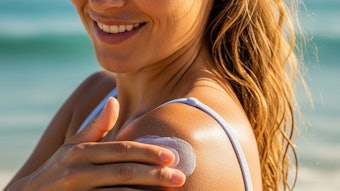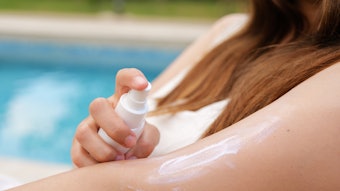
Kolmar Korea has made a significant advance in sunscreen innovation with the development of its patented UV-Duo Plus technology, reportedly the first hybrid composite sunscreen stabilization system. Combining the best of both chemical and mineral sunscreens, this cutting-edge innovation solves the longstanding technical puzzle of hybrid sunscreen formulations, setting a new benchmark in sun protection.
Resolving Sunscreen Active Aggregation
Per the company, the UV-Duo Plus technology resolves a fundamental issue with hybrid sunscreens: ingredient aggregation. Traditional hybrid sunscreens combine chemical sunscreens, known for their smooth application and minimal white cast, with mineral sunscreens, valued for their strong UV protection. However, previous formulations faced inconsistent ingredient dispersion, resulting in gaps in UV protection.
Kolmar Korea’s innovation enables the encapsulation of inorganic sunscreen particles with organic sunscreen components. This encapsulation prevents the aggregation of particles within formulations, ensuring an even application and maximizing UV protection efficacy.
An official from Kolmar Korea explained, “There are many mixed sunscreens on the market that simply combine chemical and mineral filters, but none have successfully achieved a perfect integration of the two. With UV-Duo Plus, we’ve overcome this challenge, creating a product that offers unparalleled performance.”
Enhanced UV Protection and Performance
Beyond standard UV protection, Kolmar Korea’s UV-Duo Plus targets long-wavelength ultraviolet A (long UVA) rays, which penetrate deeper into the skin and accelerate photoaging. Clinical tests have revealed that sunscreens featuring this technology improve protection against long-wavelength UV rays at 400 nm by 24.8%, compared to conventional formulations.
Key benefits include:
- SPF 50+ PA++++ efficacy, confirmed as meeting functional cosmetic standards by South Korea's Ministry of Food and Drug Safety.
- Enhanced long UVA protection, slowing visible signs of UV-induced aging.
- Minimization of white cast and improved skin application feel.
Implications for Cosmetic Scientists and Formulators
This milestone in sunscreen technology offers exciting opportunities for cosmetic chemists, formulators and R&D managers. The ability to combine the superior UV blocking of inorganic sunscreens with the pleasant sensory benefits of organic sunscreens provides a new framework for creating high-performance, consumer-friendly formulations.










